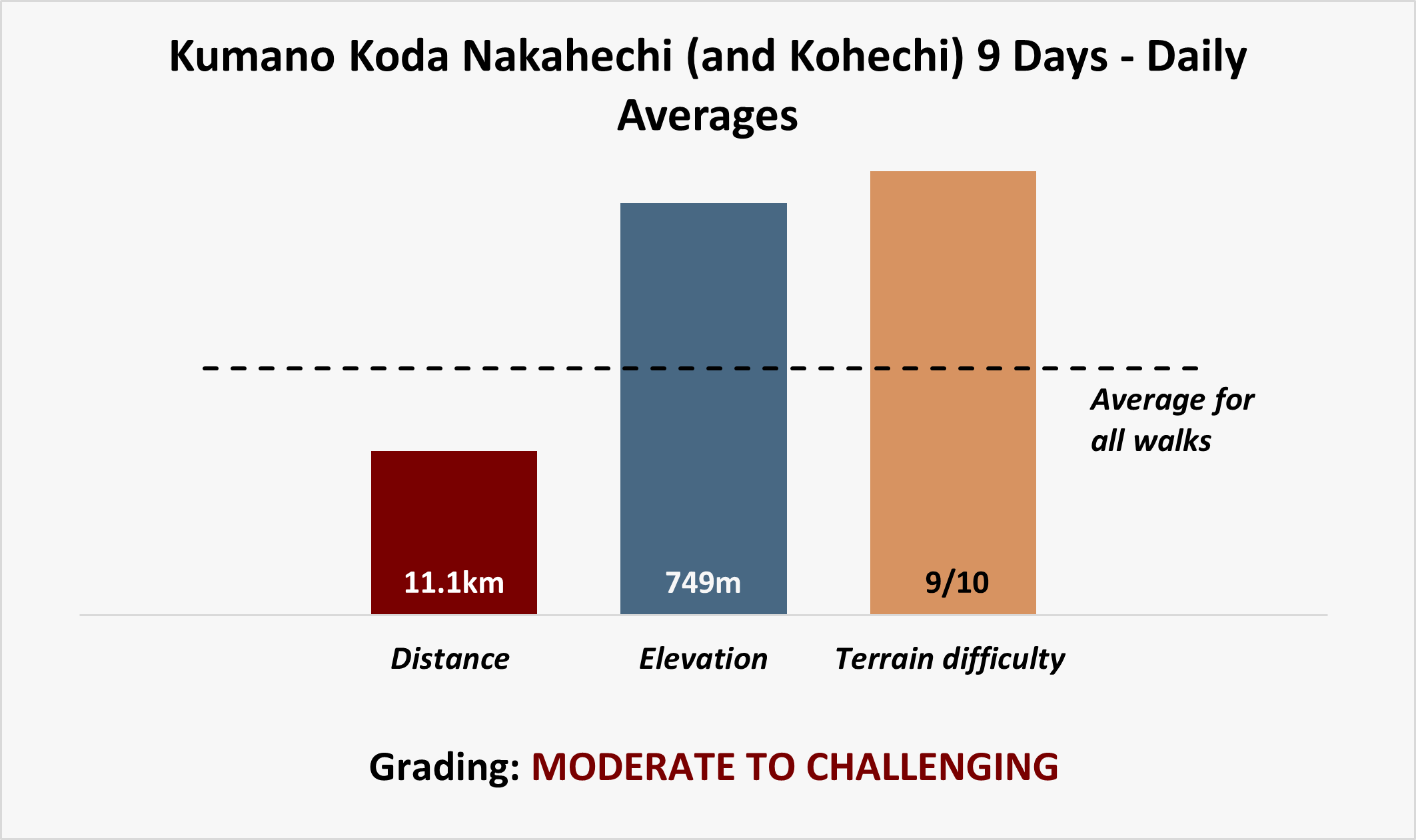HIGH SEASON CHARGES
In Japan, there are some periods when locals travel en masse as they are on holiday. These times are best avoided as the accommodation costs escalate considerably (more than double). It would make a lot of sense if you could avoid these times. Otherwise, see below for high-season periods. This could lead to the cost of the trip increasing by 30% or more.
NEW YEAR PERIOD – 30TH DECEMBER TO 4TH OF JANUARY
GOLDEN WEEK – GENERALLY BETWEEN 29TH APRIL TO 5TH MAY
OBON PERIOD – MID-AUGUST ( BETWEEN THE 10TH TO 20TH OF AUGUST)
Please speak to the office to get a quote for the above times
AVAILABILITY
This walk is available all year round, but you may encounter some snow from December to February. Many people prefer to walk in spring to see the cherry blossoms and in autumn because of the change of seasons and the good weather.
HOW TO GET START AND FROM END OF WALK
Travelling to the Start of the walk
This walk starts in Tanabe and ends in Nachi-san or Nachi-Katsuura. You will need to get yourself to and from the start and end of your walk (i.e. you will need to organise your travel to the start of the walk in Tanabe and then onwards from your last accommodation). To make it easy we have collated some useful information that will assist you in making arrangements for your travel.
By Air: By far, the best option is to fly into Osaka and take the train from there. You can take the train direct from Osaka Kansai Airport to Kii-Tanabe (train station). Take a local train for a few stops and then hop on the Kii Peninsula JR West train. The train station is at the airport, and English-speaking staff are at the ticket office. You might consider spending some time in Osaka. Osaka is a very interesting city with many beautiful temples and Osaka Castle. In spring, it is particularly beautiful. It also has a sophisticated restaurant culture and markets that seem to go on for kilometres.
By rail: Japan has one of the best train systems in the world, so it’s very easy to catch a train to any destination in the country. An express train is the fastest way to travel to the area. Travelling in Japan on trains is a seamless experience, and it is not necessary to always pre-purchase tickets. There’s plenty of Rail staff that speak English well enough to direct you the right way and to converse with you about how to buy your ticket. We can provide more information if you wish, so please ask one of our destination consultants.
Hyperdia is a great website resource for determining when and where your train departs. It might be best to buy your train ticket on the JR train network when you first arrive in Japan so you can relax. However, the trains run often and are so efficient that you shouldn’t have any trouble just arriving 20 minutes beforehand and buying a ticket. JR passes can be a convenient and reasonable way to get around the area. There are two regional JR passes that cover the Kii Peninsula: Kansai WIDE Area Pass and Ise-Kumano-Wakayama Area Tourist Pass.
The journey from Osaka to Tanabe takes about 1 – 2 hours. You can take the train direct from Osaka Kansai Airport to Kii-Tanabe (train station). Take a local train to Hineno station, then hop on the Kii Peninsula JR West train. The train station is at the airport, and there are English-speaking staff at the ticket office.
If you stay in Osaka, then you’ll need to catch the Subway (Osaka Metro Midosuji) to Tennoji station. The tickets can be purchased locally. From Tennoji, it’s a JR train service to Kii-Tanabe bound for Shirahama.
Travelling from the end of the walk
By rail: The train from Katsuura (Kii- Katsuura train station is a short distance from Nachisan) back to Osaka takes about 4 hours. You can also choose to go to Tokyo or anywhere else for that matter in Japan. However, you most likely will need to travel through a major city to get there.
By Air: See above
WALKING
This 72km walk is moderate to challenging, with some long days if you wish. Full-day walks average about 17 km with 5 –9. hours walking each day; however, they can be as long as 24 km (you can shorten most days). The walking is over well-maintained paths but expect each day to start with some reasonable elevation gains. All good, though, as the tracks do flatten out.
This historic route has stacks of small temples (Oji) and statues to admire along the way. For much of the time, you are walking under forest canopy, which makes for mild conditions other than the height of summer.
Please refer to Gear Advice in our FAQ section for what to bring.
WEATHER
From the end of March, the temperature begins to increase. In summer the conditions are excellent particularly if you enjoy warmer temperatures and taking a dip in a stream. It can, however, get a little humid.
The walk is offered in winter but bring some warm clothes and good rain gear. The area is just as beautiful if not more and is not busy at all. Soaking in an outside onsen in the cool of the night is one of those real authentic Japanese experiences that you can look forward to after a big day on the track.
We believe spring and autumn to be the best time to walk as the weather is perfect for walking.
See the weather information about Osaka’s average weather at different times of the year.
INSURANCE
We require that you have adequate travel insurance against potential losses, damage or injury, including cancellation costs and loss of luggage.
For all trips requiring international travel, you must have purchased travel insurance including medical evacuation coverage.
We also charge a cancellation fee if you cancel your walking holiday after we have confirmed it to cover costs incurred by our suppliers and in the office. See the FAQ section for more information.
INFORMATION PACK
For nearly 30 years, we have taken pride in providing seamlessly organised walking holidays, but we know, even with that in mind, that you’ll have many more questions. You will receive a detailed information pack and itinerary approximately 6 weeks out from departure outlining all the fine detail and much more.
CONTACT
If you have any questions, feel free to ask one of our destination consultants or if you have specific track-related questions, ask Magnus, Brett or Tash who have all walked the track. You can get in touch with us via our contact form, email us at info@auswalk.com.au, or call us on +61 3 9597 9767.



 SELF GUIDED
SELF GUIDED 9 DAYS
9 DAYS
 Moderate to Challenging
Moderate to Challenging 







